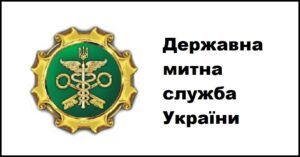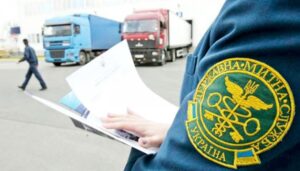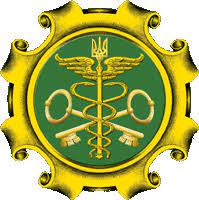
Due to technical reasons, the border crossing operations at the Palanca-Mayaky-Udobne checkpoint have been temporarily suspended, the State Customs Service of Ukraine reports.
The resumption of operations will be announced later.
Traffic on the transit section of the Odesa-Reni highway is carried out in the normal mode.
Palanka-Mayaky-Udobne checkpoint, STATE CUSTOMS SERVICE, UKRAINE

In total, 53 companies now have 55 authorizations, and two companies have received both possible statuses – AEO-C and AEO-B.
Less than two weeks ago, we reported on 48 companies that had received a total of 50 authorizations in different periods of time. Here is the list of companies that have been authorized:
VODALAND INDUSTRY LLC
J.D. EGBERTS UKRAINE LLC
LLC “EKOL LOGISTICS”
PROCTER & GAMBLE UKRAINE LLC
“CUSTOMS BROKERAGE AGENCY “CAPITAL” LLC.
The increase in the pace of accession demonstrates the transparency and reliability of businesses applying for authorizations. At the same time, there has been an increase in the number of multinational corporations that have already had experience of successfully passing the self-assessment procedure to obtain status in other countries. Now they are actively joining the AEO institution in Ukraine to enjoy the relevant benefits and simplifications.
More about the AEO status and authorization to apply simplified procedures at https://customs.gov.ua/deiaki-pitannia-funktsionuvannia-avtorizovanikh-ekonomichnikh-operatoriv
Earlier, roundtables were devoted to customs reform, where the organizer and moderator of the events, Maksim Urakin, stated that the State Customs Service provides up to 40% of the state budget revenues of Ukraine, and these figures have remained stable in recent years. That is why customs reforms are so important for the country.

The State Customs Service of Ukraine has granted the status of an authorized economic operator (AEO) with the right to apply simplified procedures to 46 companies, with 50 authorizations issued.
“A year ago, only one company in Ukraine had the AEO status, and now we are pleased to announce 50 authorizations received by 46 companies in total,” the agency said in a post on its Telegram channel.
The State Customs Service clarified that two of these companies received both types of authorizations at the same time: “on granting the right to apply simplifications” (AEO-C) and “on confirmation of safety and reliability” (AEO-B), which brings Ukraine closer to the possibility of concluding a mutual recognition agreement with other countries where the AEO program operates.
The agency emphasized that the list of roles that authorized companies play in the international supply chain has significantly expanded: 31 manufacturers (exporters), 10 importers, three warehouse holders and four companies that are carriers, forwarders and customs representatives have been granted AEO status.
According to the SCS website, the list has been updated with the following companies: Zaporizhzhia Non-Ferrous Alloys Plant (Ivano-Frankivsk), Firm Kaskad LLC (Dnipro), Ukrainian Kaolin Society (Hlukhivtsi, Vinnytsia region), Kliningspor (Velyki Mosty, Lviv region), and Oriflame Ukraine (Kyiv).
The AEO status was also granted to Popilnyansky Feed Mill (Kyiv), Tarkett Vinisin (Kalush, Ivano-Frankivsk region), and Agrosem (Kyiv).
The State Customs Service clarified that 28 applications for AEO authorization are currently under consideration. The agency believes that this figure indicates a consistently high interest of Ukrainian business entities in obtaining the relevant status.
In addition, the agency reminded companies planning to apply for AEO authorization or for the application of simplifications, transit simplifications, of the need to conduct a thorough self-assessment and fill out the relevant questionnaire, as this approach will allow companies to successfully pass the assessment of compliance with the criteria and/or conditions for granting authorization and, in particular, reduce the time for obtaining it.
“For its part, the State Customs Service, together with the Ministry of Finance, is developing initiatives that will expand the list of opportunities and benefits for businesses that have AEO authorization,” the service summarized.
As reported, the provisions of the Customs Code of Ukraine regarding the possibility of customs clearance of goods without presenting them to the customs authorities will cease to be effective on November 7, 2023. In order to continue to use the possibility of clearing goods at the facilities of enterprises, the State Customs Service recommended that businesses obtain the status of an authorized economic operator.
Having AEO authorization will allow the company to take advantage of all the benefits of AEO and facilitate access to the simplifications provided for by the Customs Code and the Convention on the Common Transit Procedure. In particular, the simplifications include reducing the level of risk in relation to the goods being transported, prioritizing customs formalities and releasing goods at the company’s location. Earlier, roundtables were devoted to customs reform, where the event’s organizer and moderator Maksim Urakin stated that the State Customs Service provides 35-40% of state budget revenues, and these figures have remained stable in recent years. That is why customs reforms are so important for the country.

The State Customs Service of Ukraine has granted the status of an authorized economic operator of the type “on confirmation of safety and reliability” (AEO-B) to SCF Ukraine PJSC (Lutsk).
“SCF Ukraine became the second enterprise in Ukraine to receive AEO-B authorization. Each enterprise that prepares and successfully passes the assessment of compliance with the AEO authorization of the type “on confirmation of safety and reliability” is a step towards the possibility of Ukraine’s conclusion of mutual recognition agreements, in particular with the European Union,” the service said in a publication in its Telegram channel on Monday.
The State Customs Service stressed that the authorization of AEO type “on confirmation of safety and reliability” gives enterprises the right to enjoy exclusive advantages. Among them – prior notification of customs inspection at the checkpoint, priority fulfillment of customs formalities, special traffic lane at the checkpoint, reduction of risk by the automated customs clearance system, use of the national AEO logo.
In contrast to enterprises that have received the more common AEO authorization of the type “on granting the right to apply simplifications” (AEO-C), enterprises with AEO-B authorization will be able to receive benefits on the basis of international agreements on mutual determination in other countries.
The agency recalled that the AEO-C authorization gives enterprises the right to receive simplifications, including transit simplifications, in particular, regarding the procedure of release by location, independent application of special type of seals, general guarantee and “authorized shipper”.
According to the published information, as of today 36 enterprises in Ukraine have received 38 AEO authorizations: 36 AEO-C and 2 AEO-B. One company can get both statuses at will.
The SKF Ukraine plant in Lutsk, controlled by Sweden’s SKF, produces roller and needle bearings and wheel units for heavy-duty/commercial vehicles.

Ukraine in 2023 reduced exports of titanium-containing ores and concentrate in physical terms by 96.4% compared to 2022 – to 11.648 thousand tons.
According to statistics released by the State Customs Service (SCS), in monetary terms, exports of titanium-containing ores and concentrate decreased by 85.1% to $19.426 million.
The main exports were to Turkey (38.21% of shipments in monetary terms), Japan (16.53%) and India (6.12%).
Ukraine imported 1 ton of such ore from the Netherlands for $2 ths.
As reported, Ukraine in 2022 reduced exports of titanium-containing ores and concentrate in physical terms by 41.8% year-on-year to 322.143 thousand tons, in monetary terms by 19.6% to $130.144 million. The main exports were to the Czech Republic (47.91% of shipments in monetary terms), the United States (11.94%) and Romania (9.75%).
Ukraine in 2022 imported 196 tons of similar products from Senegal (70.41%) and Turkey (29.59%) for $115 thousand.
In Ukraine, titanium-containing ores are currently mined mainly by United Mining and Chemical Company PJSC (UMCC), which has taken over Volnogorsk Mining and Metallurgical Combine (VGMK, Dnepropetrovsk region) and Irshansk Mining and Processing Combine (IGOK, Zhytomyr region), as well as by Mezhdurechensky GOK LLC and Valki-Ilmenit LLC (both located in Irshansk, Zhytomyr region). In addition, production and commercial firm “Velta” (Dnipro) built a mining and processing plant at Birzulovskoye deposit with the capacity of 240 thousand tons of ilmenite concentrate per year.
In addition, production and commercial firm “Velta” (Dnipro) built a mining and processing plant at Birzulovskoye deposit with a capacity of 240 thousand tons of ilmenite concentrate per year.
exports of titanium-containing ores, STATE CUSTOMS SERVICE, UNITED MINING AND CHEMICAL COMPANY